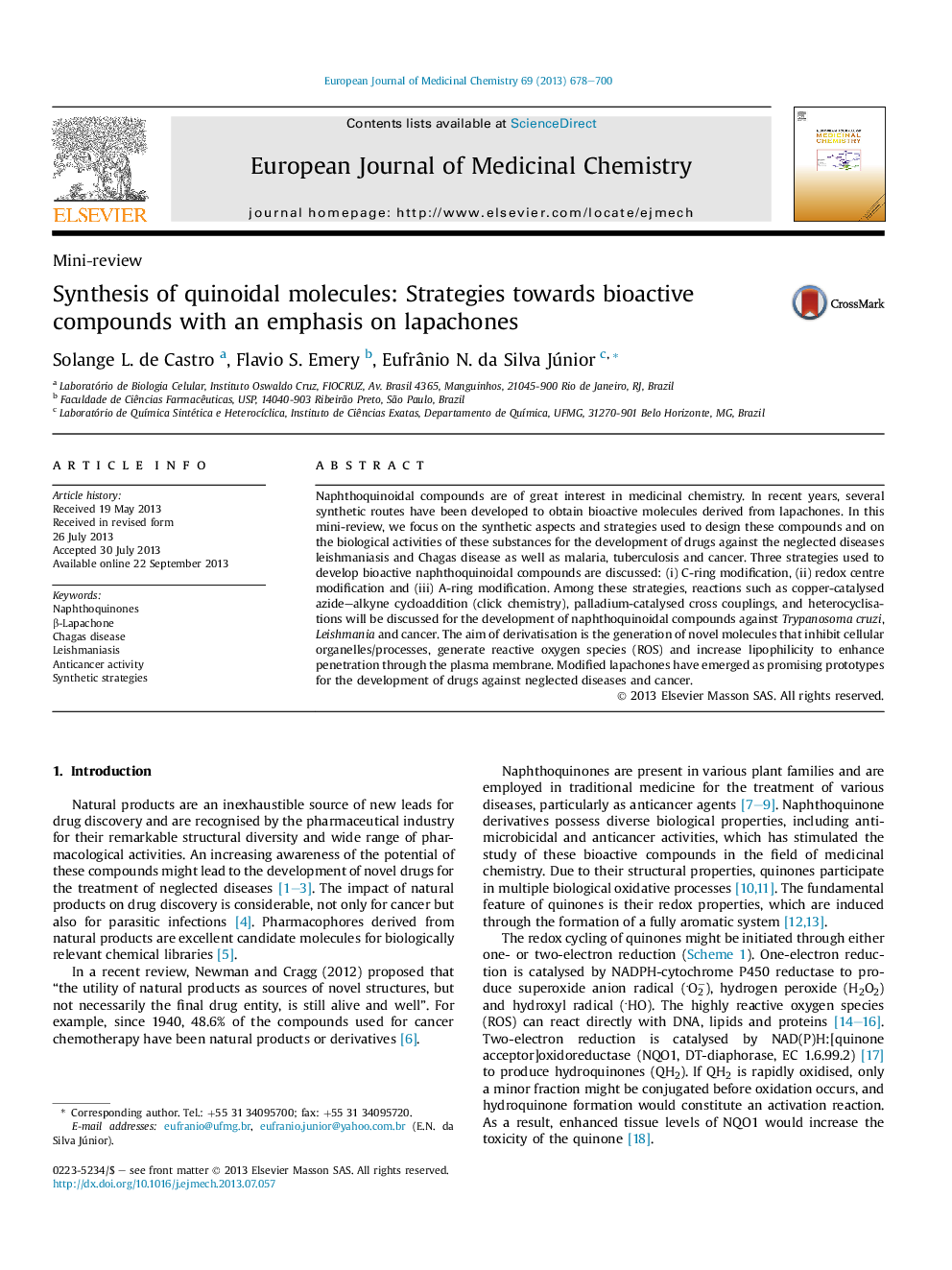| Article ID | Journal | Published Year | Pages | File Type |
|---|---|---|---|---|
| 1398978 | European Journal of Medicinal Chemistry | 2013 | 23 Pages |
•The article features the synthesis and biological activities of lapachones.•Compounds with biological activities against neglected diseases and cancer were listed.•Strategies used to obtain bioactive compounds were described.
Naphthoquinoidal compounds are of great interest in medicinal chemistry. In recent years, several synthetic routes have been developed to obtain bioactive molecules derived from lapachones. In this mini-review, we focus on the synthetic aspects and strategies used to design these compounds and on the biological activities of these substances for the development of drugs against the neglected diseases leishmaniasis and Chagas disease as well as malaria, tuberculosis and cancer. Three strategies used to develop bioactive naphthoquinoidal compounds are discussed: (i) C-ring modification, (ii) redox centre modification and (iii) A-ring modification. Among these strategies, reactions such as copper-catalysed azide–alkyne cycloaddition (click chemistry), palladium-catalysed cross couplings, and heterocyclisations will be discussed for the development of naphthoquinoidal compounds against Trypanosoma cruzi, Leishmania and cancer. The aim of derivatisation is the generation of novel molecules that inhibit cellular organelles/processes, generate reactive oxygen species (ROS) and increase lipophilicity to enhance penetration through the plasma membrane. Modified lapachones have emerged as promising prototypes for the development of drugs against neglected diseases and cancer.
Graphical abstractFigure optionsDownload full-size imageDownload as PowerPoint slide
